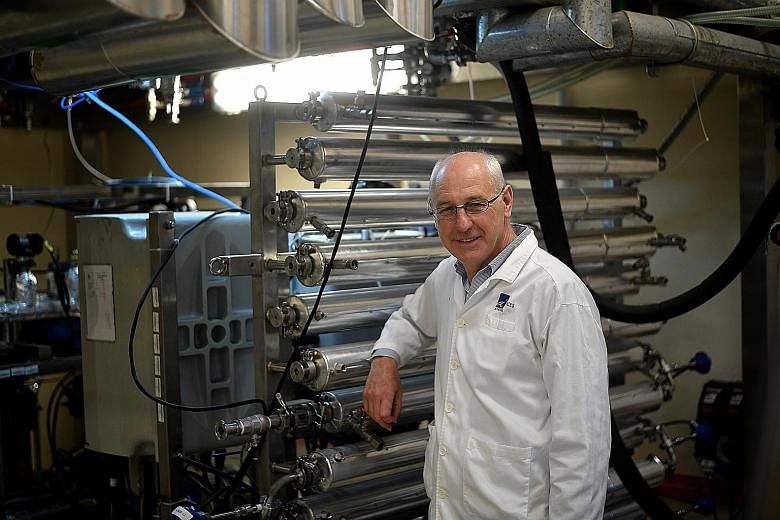The chemical engineering research and development (R&D) field may not exactly be well-known.
Yet its influence can be felt in almost all aspects of daily life, from the medicine we take to the plastics we use, to making sure the consistency of hair gel is just right.
Chemical engineers design and manufacture these products and more from raw materials.
The R&D performance is closely tied to work done by the Institute of Chemical and Engineering Sciences (ICES), which is under the Agency for Science, Technology and Research (A*Star). ICES is the only public-sector chemical engineering R&D institute in Singapore dedicated to resolving issues the chemical engineering industry faces.
Dr Keith Carpenter, 65, was ICES' executive director. He left his native United Kingdom for Singapore in 2002 to launch and grow the institute.
Back then, Jurong Island was still undergoing reclamation works and he thought that the Government's plans to build ICES and recruit its 200 staff in three years were "crazy". He said: "It seemed to be hugely ambitious. You couldn't do that in the UK."
Fifteen years later, after stepping down from his role as executive director on June 30, he is hugely proud of what ICES has achieved.
Starting from 2002, ICES has published about 1,500 papers. It also took on about 1,200 projects from 400 companies between 2010 and 2016.
Dr Carpenter said ICES was key to building private-sector involvement in chemical engineering R&D.
From 2002 to 2012, business expenditure on R&D in the chemicals and materials field more than quadrupled to $660 million.
Dr Carpenter helped negotiate the multimillion-dollar deals that brought global industry players to Singapore.
Last December, American drug giant Pfizer agreed to collaborate with ICES to develop high-tech manufacturing technologies.
Japanese chemicals giant Mitsui Chemicals chose ICES to house its first overseas petrochemical research centre in 2006.
And in 2011 one of the world's largest experimental power-grid facilities, run by ICES, was officially launched.
Dr Carpenter said that this power grid is unique because it is the largest experimental power grid in Asia that can be configured to simulate any power grid in the world.
The facility allows cutting-edge research to develop future energy technologies which will be commercialised eventually.
While showing foreign visitors the power grid, he said: "I was just walking around (it)... and going, 'Wow, we did it'."
Dr Carpenter said that much of ICES' new work will be in the design and manufacturing of food nutrition, agri-chemicals and consumer products, and doing these in an environmentally sustainable way.
He also highlighted big data as the next frontier for ICES. For example, the facility plans to add sensors to various parts of its advanced manufacturing equipment, allowing chemical engineers to detect in real time and in great detail whether their equipment is working properly. This, he said, will make it possible for them to finely calibrate the manufacturing process and increase efficiency.
Dr Carpenter is now an A*Star senior fellow and has no plans to return to the UK.
When he first moved to Singapore and spoke to his landlady, she mentioned that it was a pity her young son could not meet him. "I couldn't imagine anywhere else in the world where somebody would want to meet a scientist," he said.
He added that he appreciates the investment Singapore has committed to science. "There are not many places this size that have the equivalent of $19 billion for research, so it's a great place for a scientist."
After his first wife died in 2006, he married a Singaporean artist three years later. Two of his three children live in Singapore, while the third lives in Australia. He has three Singaporean stepchildren, from his current wife's previous marriage.
"You want to do it (chemical engineering R&D) in an environment where R&D is recognised, where you've got access to very good people, where it's well-organised, with high-tech infrastructure, where it's got good intellectual-property protection. Where better than Singapore to do it?" he said.


